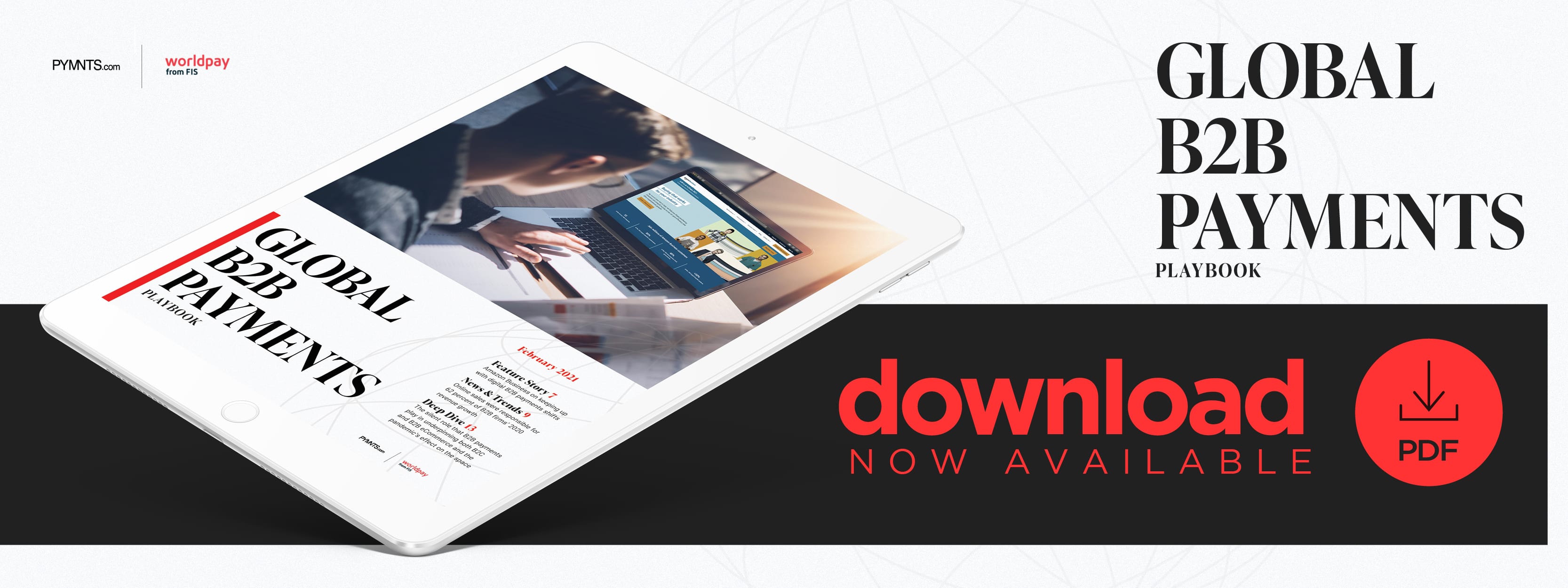Amazon Business On Keeping Up With Digital B2B Payment Shifts

Keeping B2B supply chains running smoothly — and quickly — when cross-border commerce is involved requires payments flexibility and personalization. In the Global B2B Payments Playbook, Ragui Selwanes, director of business payments for Amazon Business, explains the value of configurable invoicing and virtual cards in giving global businesses the tools they need to compete.
The eCommerce sector has moved rapidly over the past year to accommodate the needs of its growing — and more demanding — customer base during the pandemic.
Consumer-facing businesses have hustled to get goods out the door, but this speed also means that they must make faster payments to their vendors and other B2B players working behind the scenes.
Companies are also looking for more personalization when it comes to having their B2B payment needs fulfilled, Ragui Selwanes, director of Business Payments for Amazon Business, told PYMNTS in an interview. He said the growing interest in and adoption of digital payment tools in the B2B eCommerce space means that businesses are beginning to seek access to myriad electronic payment methods.
“What we are finding at this point is [that] our customers are starting to ask us to accommodate their payment workflow cycles,” he said. “That means that, rather than necessarily trying to follow along [with the way] we do business or the way that we process and handle payments within Amazon, they are asking us to make sure that we have mechanisms to accommodate the way they handle their payments structures.”
More businesses now expect their marketplaces and providers to work seamlessly with the digital systems and payment types they prefer, rather than cling to outdated methods. Facilitating this B2B personalization is thus key to helping eCommerce marketplaces and other players in the global B2B space stay competitive.
Removing The Cross-Border Question
Challenges exist to ensuring that businesses — especially those in the cross-border payments space — can access their preferred B2B payment methods when they move to eCommerce marketplaces or sites. More firms are starting to look outside their native markets for potential partners or vendors, magnifying the importance of enabling payments in various currencies or methods.
“Any time that you are shopping cross border, you worry about, first, am I shopping in the currency that … my organization leverages, and will I be [certain of] the price that I am paying?” Selwanes said. “So, if I am buying it in euros and the currency — or at least the location … that it is coming from — is in British pounds, [the organization] wants to make sure that is not a moving target for them, that they actually know the amount [for] certain that they are paying. So, establishing that would be the first goal, and we have built systems that allow the customer to shop in their local currency, even if they are buying outside of the [market].”
He said that while cross-border payments still represent a smaller share of Amazon Business transactions, the company nevertheless tackles them with the same strategy of personalization and flexibility that it applies to B2B payments that occur within the same market. The firm enables a range of payment methods for both cross-border and domestic businesses, and it supports configurable invoicing, corporate payments or B2B credit card payments as well as custom integrations for companies leveraging virtual cards or buyer-initiated payments. The company also accommodates local currencies in the markets in which it operates.
“Cross border is not so much of a pain point in the way that Amazon’s designed its system, so we have actually solved that,” he said. “It becomes pretty transparent to our customer.”
Allowing businesses to make domestic and cross-border B2B transactions faster and more transparently is likely to become more essential over time as the B2B eCommerce space expands and as firms continue flocking to digital marketplaces and methods.
Staying On Top Of The Global B2B eCommerce Curve
Selwanes noted that the digital B2B shift has been underway for some time, but the ongoing pandemic has accelerated the trend for businesses that had been clinging to their legacy business practices and payment methods.
“I think the conversion to more electronic forms of payment is probably a trend that is here to stay,” he said. “I mean, the conversion to electronic [payments] has been around for the last two decades. I do not think that’s anything particularly new. I think what [the pandemic] did in this particular case is that when everyone shifted to work-from-home access, the sort of systems that were more manual got diminished pretty significantly. By necessity, businesses were compelled to do, if they were not already there, the conversion to [an] electronic payments structure.”
B2B marketplaces must monitor emerging digital payment trends to ensure they are offering the options that matter most to their partners. Staying on top of companies’ emerging payment preferences and needs will be essential to hitting the mark now and in the future.
